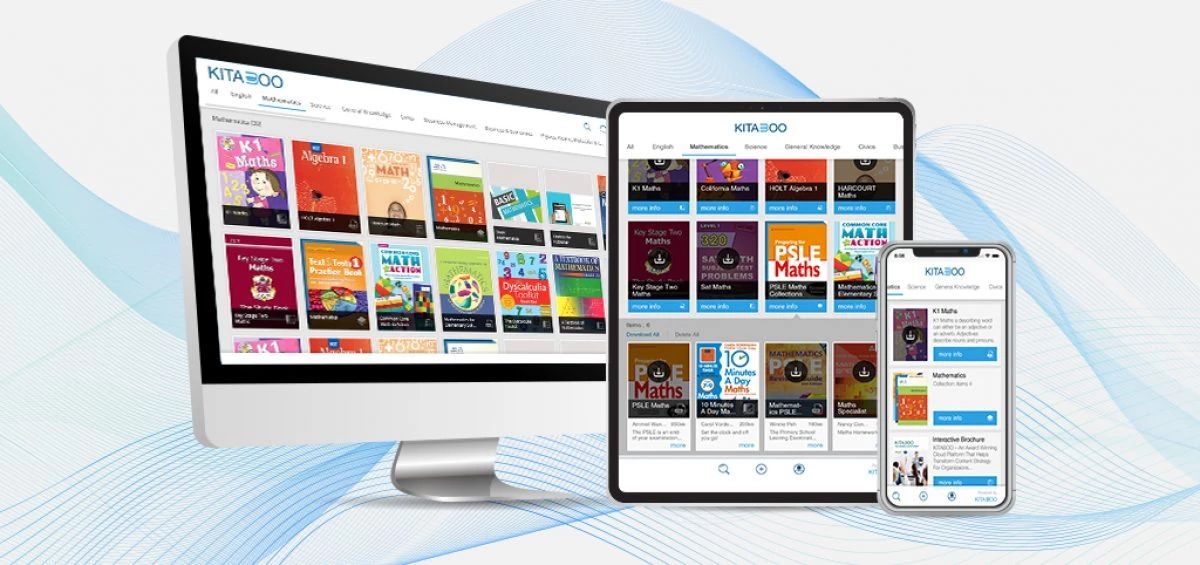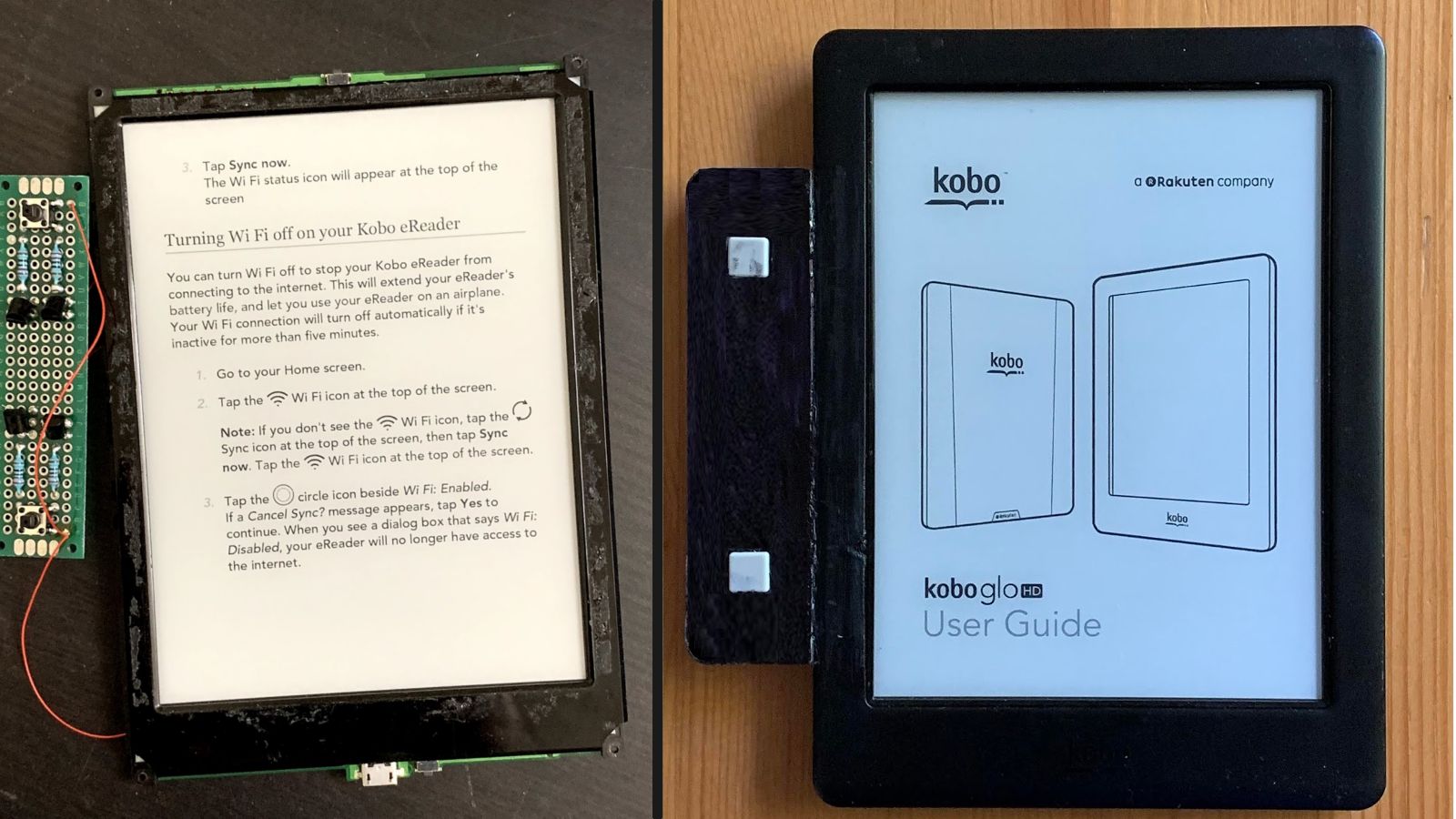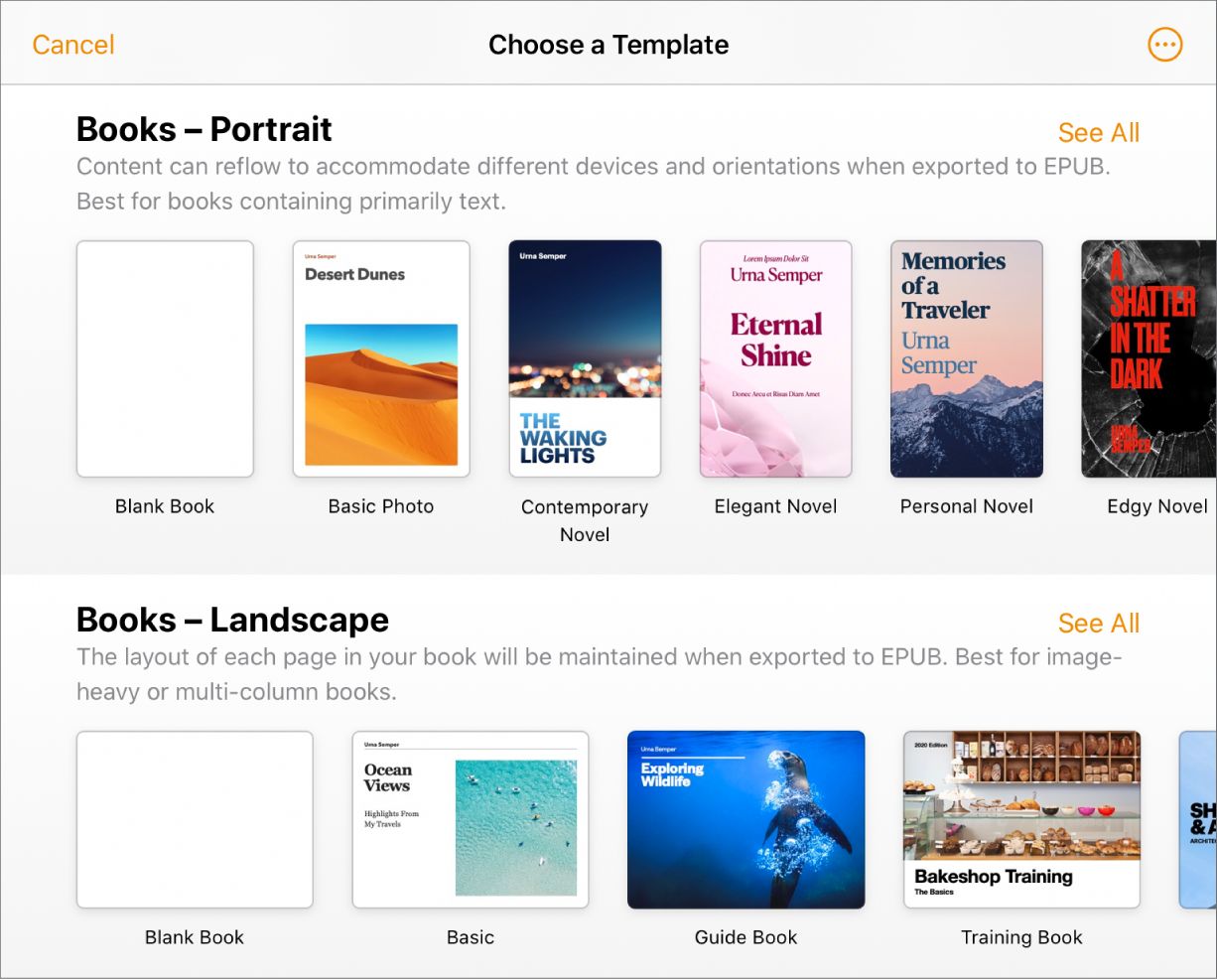Introduction
Welcome to the world of interactive eBooks! Gone are the days when eBooks were limited to plain text and static images. With the rise of technology, we now have the ability to create engaging and interactive reading experiences that captivate readers in a whole new way.
An interactive eBook is not just a traditional eBook with a few hyperlinks thrown in. It’s a carefully crafted digital masterpiece that combines multimedia elements such as videos, audios, animations, and interactive elements like quizzes, games, and 3D models, to create an immersive reading experience.
But why should you create an interactive eBook, you may ask? The answer is simple: interactivity holds the power to enhance comprehension, engagement, and retention. By leveraging the interactive capabilities of digital devices, you can create a dynamic learning environment that keeps readers hooked from start to finish.
Whether you are an author looking to self-publish your book, an educator aiming to create interactive textbooks, or a marketer wanting to engage your audience with compelling content, this guide will take you through the step-by-step process of creating an interactive eBook that is sure to leave a lasting impression.
In the following sections, we will explore the key steps involved in creating an interactive eBook. From planning your eBook and creating content to adding multimedia elements and designing the layout, we will cover everything you need to know to bring your vision to life. So, without further ado, let’s dive into the exciting world of interactive eBooks!
Why Create an Interactive eBook?
As we live in a digital age, traditional printed books are increasingly being replaced by digital alternatives. While eBooks have gained popularity, the demand for interactive eBooks has soared even higher. Here are some compelling reasons why you should consider creating an interactive eBook:
- Enhanced Engagement: Interactive eBooks provide a level of engagement that traditional books cannot match. By incorporating multimedia elements like videos, audios, and animations, you can grab your readers’ attention and immerse them in the content. This dynamic experience keeps readers engaged, encourages active participation, and fosters a deeper understanding of the subject matter.
- Improved Comprehension: Interactivity helps facilitate comprehension. By adding interactive elements like quizzes, puzzles, and simulations, you can reinforce concepts, test knowledge, and provide instant feedback. This active learning approach enhances comprehension and retention, making your eBook a valuable educational resource.
- Personalized Learning: With interactive eBooks, readers have the opportunity to tailor their learning experience. You can create branching paths, allowing readers to choose their own learning journey based on their interests or skill levels. This personalized approach enhances engagement, promotes self-directed learning, and accommodates diverse learning styles.
- Visual Appeal: Interactive eBooks allow for visually stunning designs that captivate readers. By integrating attractive layouts, interactive graphics, and eye-catching animations, you can create a visually appealing reading experience that keeps readers hooked. This visual appeal not only enhances engagement but also conveys information more effectively.
- Interactive Assessments: If you are an educator or trainer, interactive eBooks provide a valuable tool for assessment. You can embed interactive quizzes, fill-in-the-blank exercises, and interactive assessments to gauge readers’ understanding of the material. This real-time feedback allows for immediate identification of strengths and weaknesses, enabling targeted instruction.
Creating an interactive eBook opens up a world of possibilities for authors, educators, and marketers. It allows you to elevate your content, engage your readers, and stand out from the crowd. Whether you are aiming to educate, entertain, or inform, an interactive eBook can help you deliver an impactful and memorable experience.
Now that we understand the various benefits of creating an interactive eBook, let’s dive into the step-by-step process of bringing your vision to life.
Step 1: Planning Your eBook
Before embarking on the journey of creating your interactive eBook, it is essential to have a solid plan in place. Planning ensures that you have a clear direction, a well-defined target audience, and a strategic approach to deliver the best experience possible. Here are the key elements to consider when planning your eBook:
- Define Your Goals: Start by clarifying your objectives for creating the interactive eBook. Are you looking to educate, entertain, or promote a product or service? Understanding your goals will help guide the content and design decisions throughout the creation process.
- Identify Your Target Audience: Determine who your eBook is aimed at. Consider their age, background, interests, and skill level. By understanding your target audience, you can tailor the content and interactivity to meet their specific needs and preferences.
- Create a Storyboard: A storyboard is a visual outline that helps organize the structure and flow of your eBook. It acts as a roadmap, outlining the main sections, chapters, and interactive elements. Sketch out the layout, placeholders for multimedia elements, and interactive features you plan to incorporate.
- Content Outline: Break down your eBook’s content into chapters or sections. Create a brief outline for each section to ensure a logical flow. Consider what information needs to be covered, the order in which it should be presented, and any interactive elements that can enhance the learning experience.
- Visual Design: Determine the overall visual style and design elements of your eBook. Consider the color scheme, fonts, and imagery that best align with your brand or message. A visually appealing design enhances the readability and engages readers on a deeper level.
- Interactive Elements: Identify the interactive elements you want to include in your eBook. This could range from videos, audio clips, and animations to quizzes, drag-and-drop activities, and interactive diagrams. Select the interactive elements that best complement your content and meet your goals.
- Platform Compatibility: Consider the platforms and devices on which you want your eBook to be accessible. Ensure that the interactive elements and multimedia you plan to integrate are compatible with the platforms you choose.
By thoroughly planning your eBook, you set a strong foundation for its success. A well-thought-out plan helps streamline the creation process, ensures alignment with your goals, and delivers a high-quality interactive reading experience. With your plan in place, you are ready to move on to the next step: creating the content for your interactive eBook.
Step 2: Creating Your Content
Now that you have a clear plan in place, it’s time to start creating the content for your interactive eBook. This step involves writing and organizing your text, selecting relevant visuals and multimedia, and ensuring that your content is engaging and informative. Here’s a breakdown of the key considerations for creating compelling content:
- Write Engaging Text: Craft clear and concise text that captures the attention of your readers. Use a conversational tone to make your content relatable and easy to understand. Break up lengthy paragraphs into smaller chunks and use subheadings to improve readability.
- Structure Your Content: Organize your content in a logical manner. Use headings and subheadings to create a clear hierarchy and guide readers through your eBook. Consider adding bullet points or numbered lists to present information in a digestible format.
- Select Relevant Visuals: Choose visuals that support and enhance your content. This can include images, graphs, charts, or infographics. Make sure the visuals are high-quality, visually appealing, and align with the overall theme and tone of your eBook.
- Incorporate Multimedia Elements: Integrate multimedia elements to provide a richer reading experience. This can include embedding videos, audio clips, or interactive animations. Use multimedia strategically to demonstrate concepts, provide examples, or engage readers in interactive activities.
- Use Hyperlinks: Incorporate hyperlinks to provide additional resources, references, or further reading materials. Hyperlinks can also be used to navigate within your eBook, allowing readers to easily jump to relevant sections.
- Ensure Consistency: Maintain consistency in writing style, formatting, and design elements throughout your eBook. This creates a cohesive and professional reading experience. Use a consistent color scheme, fonts, and formatting styles to give your eBook a polished look.
- Engage Readers with Interactive Elements: As you create your content, think about how you can incorporate interactive elements to enhance engagement. This can include interactive quizzes, drag-and-drop exercises, or clickable diagrams. Interactive elements promote active learning and keep readers actively engaged with your eBook.
By focusing on creating engaging and informative content, you lay the foundation for a compelling interactive eBook. Remember to review and edit your content thoroughly to ensure accuracy, clarity, and effectiveness. With your content in place, you are ready to move on to the next step: adding interactivity and multimedia elements to bring your eBook to life.
Step 3: Adding Interactivity with Multimedia
Adding interactivity and multimedia elements is a key aspect of creating an engaging and interactive eBook. By incorporating multimedia elements such as videos, audios, animations, and interactive elements like quizzes and games, you can enhance the learning experience and captivate your readers. Here’s a breakdown of the key considerations when adding interactivity and multimedia:
- Choose Relevant Multimedia: Select multimedia elements that align with your content and enhance the reader’s understanding. Consider whether a video, audio clip, or animation would be more effective in conveying specific information or concepts.
- Embed Multimedia Elements: Embed the selected multimedia elements into your eBook using the appropriate file formats, such as MP4 for videos or MP3 for audio clips. Ensure that the file sizes are optimized for quick loading without compromising on quality.
- Create Interactive Assessments: Incorporate interactive quizzes, puzzles, or assessments to gauge the reader’s understanding and provide immediate feedback. This encourages active learning and helps reinforce concepts.
- Add Clickable Elements: Make your eBook interactive by adding clickable elements, such as hyperlinks and buttons, that allow readers to navigate to different sections, external resources, or interactive elements within the eBook itself.
- Employ Interactive Graphics: Utilize interactive graphics to visually engage readers. This can include interactive diagrams, maps, or charts that enable readers to explore and interact with the content.
- Design Interactive Features: Create interactive features like drag-and-drop activities or simulations that encourage hands-on learning and provide an immersive experience for your readers.
- Optimize Multimedia Performance: Ensure that multimedia elements are optimized for various devices and platforms. Test the performance of your eBook across different browsers, screen sizes, and operating systems to ensure a seamless experience for your readers.
By adding interactivity and multimedia elements, you transform your eBook into an engaging and interactive learning tool. These elements not only grab the reader’s attention but also facilitate a deeper understanding and retention of the content. With the interactivity and multimedia features in place, it’s time to focus on the next step: designing the layout and formatting of your interactive eBook.
Step 4: Designing the Layout and Formatting
The layout and formatting of your interactive eBook play a crucial role in delivering a visually appealing and well-structured reading experience. A well-designed eBook not only enhances readability but also adds a professional touch to your content. Here are the key considerations when designing the layout and formatting of your eBook:
- Choose a Responsive Design: Opt for a responsive design that adapts to different screen sizes and orientations. This ensures that your eBook is accessible and readable on various devices, including smartphones, tablets, and computers.
- Define a Consistent Style: Establish a consistent visual style throughout your eBook. This includes selecting a cohesive color scheme, typography, and formatting styles for headings, subheadings, and body text. Consistency creates a visually appealing and cohesive reading experience.
- Create Clear Navigation: Design an intuitive navigation system that allows readers to easily navigate through your eBook. Incorporate clickable buttons or menus for easy access to different sections, chapters, or interactive elements.
- Utilize White Space: Make effective use of white space to improve readability and create a visually pleasing layout. Proper spacing between paragraphs, images, and interactive elements helps readers focus on the content and improves overall comprehension.
- Add Visual Elements: Enhance the visual appeal of your eBook by incorporating relevant and high-quality images, icons, and graphics. Use visuals strategically to support the text, break up sections, or highlight important points.
- Ensure Readability: Pay attention to font choices and font sizes to ensure readability across different devices and screen sizes. Use a legible font and appropriately sized text to provide a comfortable reading experience.
- Highlight Key Information: Use formatting techniques such as bold, italics, or color to draw attention to important information, key terms, or headings. This makes your content more scannable and helps readers quickly identify key points.
- Add Interactive Call-to-Actions: Incorporate interactive call-to-actions that prompt readers to engage further with your eBook. This can include clickable buttons for accessing additional resources, engaging in discussions, or purchasing related products or services.
By focusing on the layout and formatting of your eBook, you enhance the overall aesthetics and readability of your content. A well-designed eBook not only captures readers’ attention but also ensures a seamless and enjoyable reading experience. With the layout and formatting sorted, let’s move on to the next step: adding interactive elements to make your eBook truly engaging.
Step 5: Adding Interactive Elements
Now that you have created the content and designed the layout of your interactive eBook, it’s time to take it to the next level by adding interactive elements. These elements will effectively engage and immerse your readers, providing them with an interactive and dynamic reading experience. Here are the key considerations when adding interactive elements:
- Create Interactive Quizzes: Incorporate interactive quizzes throughout your eBook to assess readers’ understanding of the content. This not only engages readers but also helps reinforce the material and provides immediate feedback.
- Integrate Interactive Infographics: Turn static infographics into interactive ones by adding clickable elements or hover effects. This allows readers to explore the data or information in a more engaging and interactive way.
- Add Drag-and-Drop Activities: Include drag-and-drop activities that require readers to interact with elements or organize information. This hands-on approach deepens their understanding and provides a more interactive learning experience.
- Include Interactive Simulations: Incorporate interactive simulations or virtual experiences to help readers visualize concepts or scenarios. This immersive approach enhances engagement and improves comprehension.
- Embed 3D Models: If applicable to your content, consider including interactive 3D models. This allows readers to rotate, zoom, and explore objects from different angles, providing a more interactive and engaging learning experience.
- Utilize Interactive Timelines: Display chronological events or historical data using interactive timelines. This allows readers to navigate through time, explore key events, and gain a deeper understanding of the subject matter.
- Add Interactive Maps: Include interactive maps that readers can explore for geographic, historical, or educational purposes. Allow them to click on specific locations for additional information or to access relevant resources.
- Integrate Gamification Elements: Add gamification elements such as rewards, achievements, or progress tracking to incentivize reader engagement and make the learning process more fun and interactive.
By incorporating these interactive elements, you transform your eBook into an interactive and immersive experience that captivates your readers. Remember to align the interactive elements with your content and goals to ensure they enhance the overall learning experience. With the interactive elements in place, it’s time to move on to the final step: testing and optimizing your eBook for optimal performance.
Step 6: Testing and Optimizing Your eBook
Once you have added all of the interactive elements to your eBook, it’s important to thoroughly test and optimize it to ensure a smooth and enjoyable reading experience for your audience. Here’s a step-by-step guide on how to test and optimize your interactive eBook:
- Check for Errors: Proofread your eBook thoroughly to eliminate any spelling or grammatical errors. Ensure that all interactive elements are working correctly and that all links are functioning as intended.
- Test on Multiple Devices and Platforms: Test your eBook on different devices, including smartphones, tablets, and computers, to ensure compatibility and responsiveness. Check how it performs on different browsers and operating systems as well.
- Optimize File Size: Compress multimedia files to optimize their size without compromising quality. Large file sizes can lead to slow loading times and may affect the overall performance of your eBook.
- Ensure Accessibility: Ensure that your eBook is accessible to individuals with disabilities. Make sure it meets accessibility guidelines, including providing alternative text for images, using descriptive headings, and enabling text-to-speech functionality.
- Test Interactivity: Test all interactive elements, including quizzes, drag-and-drop activities, and multimedia elements, to ensure they work as intended. Verify that they are engaging and enhance the overall reading experience.
- Seek User Feedback: Give a select group of individuals access to your eBook and ask for their feedback. Pay attention to their comments, suggestions, and any issues they encounter. This feedback will help you identify areas for improvement and make necessary adjustments.
- Optimize Performance: Optimize your eBook’s performance by ensuring quick loading times and smooth transitions between pages and interactive elements. Keep file sizes as small as possible, use caching techniques, and optimize code and scripts.
- Update and Iterate: As you receive feedback and identify areas for improvement, make necessary updates to your eBook. Iterate on your design, content, and interactivity to continuously enhance the user experience and keep your eBook up-to-date.
By thoroughly testing and optimizing your interactive eBook, you ensure a high-quality product that provides an exceptional reading experience for your audience. Remember to consider user feedback and make necessary adjustments to improve the overall performance and engagement of your eBook. With the testing and optimization complete, you are ready to publish and share your interactive eBook with the world!
Conclusion
Congratulations! You have successfully learned the step-by-step process of creating an interactive eBook. By incorporating interactivity and multimedia elements, you have transformed your eBook into an engaging and immersive reading experience.
Throughout this guide, you have discovered the importance of proper planning, content creation, layout and formatting, and the integration of interactive elements. Each step plays a pivotal role in ensuring that your eBook captivates and educates your readers.
Remember, interactivity holds the power to enhance engagement, comprehension, and retention. By leveraging interactive elements such as quizzes, interactive graphics, and multimedia, you can create an eBook that stands out in the digital realm.
Additionally, be mindful of optimizing your eBook for different devices and platforms, testing for any errors or issues, and continuously seeking user feedback for improvements. This iterative process ensures that your eBook evolves and remains relevant to your audience.
Now armed with the knowledge and understanding of creating interactive eBooks, go forth and share your creations with the world. Whether you are an author, educator, or marketer, an interactive eBook can be a powerful tool to educate, entertain, and engage your audience.
So, take the leap and let your creativity shine in the realm of interactive eBooks. The possibilities are endless, and with each new endeavor, you will refine your skills and captivate readers with your interactive masterpieces.
Start your journey today and create an interactive eBook that leaves a lasting impression on your readers!

























